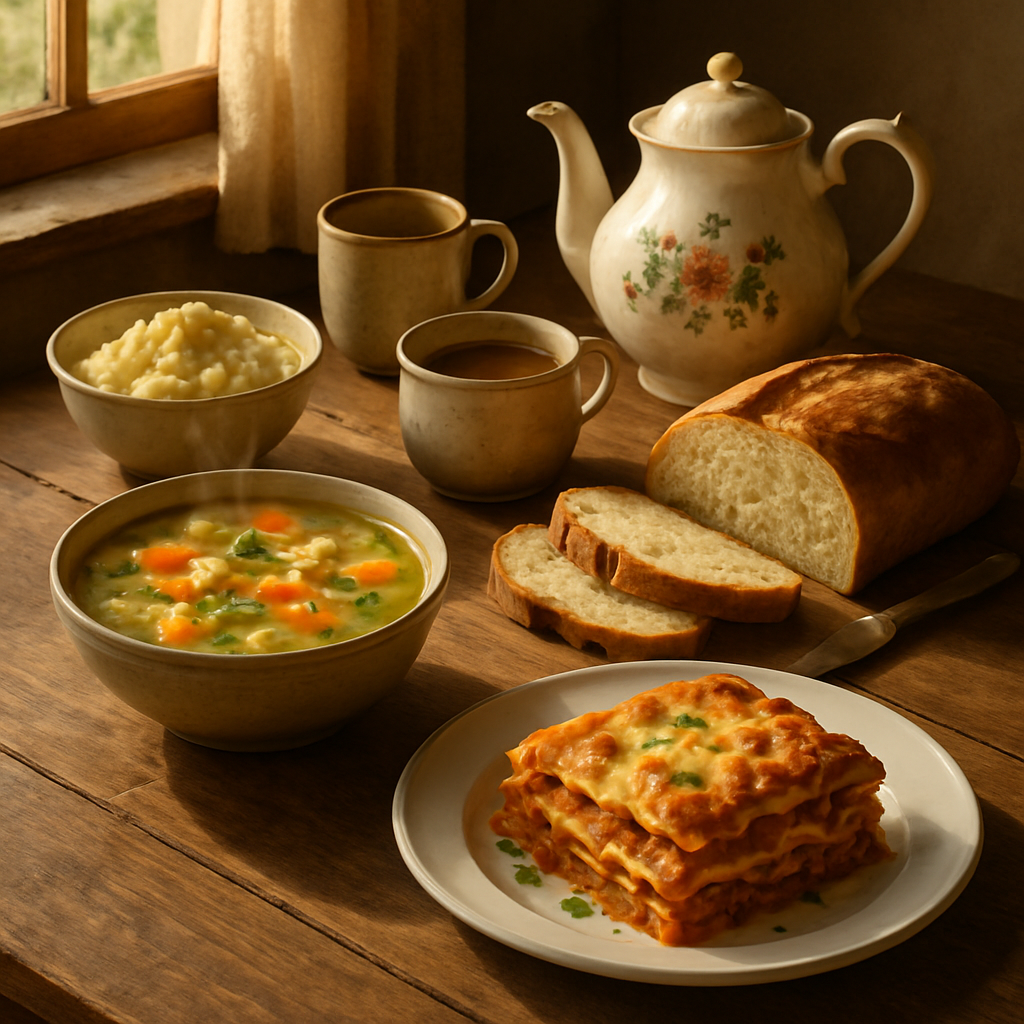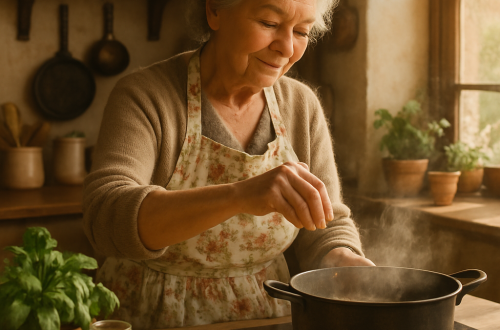The Secret History of Comfort Foods That Saved Humanity

Throughout human history, certain foods have done more than just fill bellies – they’ve literally saved civilizations from collapse, nourished populations through devastating hardships, and shaped the course of history. These humble heroes of our pantries and refrigerators weren’t created in fancy kitchens by celebrity chefs. They emerged from necessity, ingenuity, and sometimes sheer desperation.
What we now call “comfort foods” often have origins rooted in survival. That mac and cheese you crave after a tough day? Its ancestors once prevented starvation during harsh winters. The simple potato? It fueled industrial revolutions and sustained populations through wars. Behind many of our most beloved dishes lies a remarkable story of human resilience and adaptation.
The history of these foods reveals something profound about humanity. When faced with scarcity, people don’t just survive – they create. They transform the mundane into something meaningful, something that not only sustains the body but also nourishes the spirit. This ability to find comfort, community, and even joy through food during our darkest hours represents one of humanity’s most remarkable traits.
The Humble Potato That Changed the World
Few foods have shaped human history quite like the unassuming potato. Native to South America, this tuber traveled to Europe in the 16th century, initially regarded with suspicion and sometimes outright hostility. Europeans were skeptical of this strange underground crop, and many believed it caused leprosy or was somehow associated with witchcraft.
But the potato had something extraordinary going for it – it could grow almost anywhere, yield more calories per acre than grain crops, and resist many common plant diseases. A single acre of potatoes could feed a family of six for a year. As European populations expanded and farmland became scarce, the potato emerged as nothing short of miraculous.
In Ireland, the potato became particularly vital. By the early 1800s, the average Irish adult was consuming 10 pounds of potatoes daily. The crop thrived in Ireland’s cool, damp climate and could grow abundantly even on small plots of marginal land. For a population subjected to British colonial policies that limited their access to land, the potato made survival possible.
The flip side of this dependency became catastrophically clear during the Great Famine of 1845-1849, when potato blight destroyed successive harvests. Over a million Irish died, and another million emigrated, fundamentally altering the country’s demographic and cultural landscape – and reshaping America in the process, as Irish immigrants brought their skills, culture, and yes, potato recipes to their new home.
But the potato’s influence extends far beyond Ireland. In Prussia (modern-day Germany), Frederick the Great recognized the potato’s potential to feed his growing population and army. When peasants resisted growing this strange new food, Frederick employed reverse psychology. He posted guards around royal potato fields, implying they were valuable and exclusive. Curious peasants began stealing and planting potatoes, exactly as Frederick had hoped. This strategic promotion of the potato helped fuel Prussia’s rise as a European power.
During World War II, victory gardens across America and Europe produced potatoes as a vital food source when commercial agriculture was disrupted. The humble spud, in its various forms from mashed potatoes to potato soup, became synonymous with comfort during hardship – a psychological association that persists today.
Bread, Beer, and Civilization Itself
“Give us this day our daily bread” – this phrase from the Lord’s Prayer reflects bread’s fundamental importance to human survival. Archaeological evidence suggests humans have been making bread for at least 14,000 years, predating agriculture itself. The earliest breads were likely flatbreads made from wild grains pounded into paste and cooked on hot rocks.
The development of leavened bread around 6,000 years ago in Egypt marked a revolutionary advancement. Egyptians discovered that leaving dough to sit before baking created a lighter, more palatable bread. This discovery happened alongside another world-changing fermentation process – beer brewing. Both bread and beer rely on the same biological process, and they evolved together, becoming the cornerstones of many ancient civilizations.
During the building of the pyramids, workers were paid partly in bread and beer – a practical wage that provided both calories and safe hydration in a time when water sources were often contaminated. Bread became so essential to Roman civilization that emperors provided free or subsidized bread to citizens – the famous “bread and circuses” policy that helped maintain social order.
Throughout medieval Europe, bread continued its reign as the staff of life. The type of bread you ate signaled your social status – refined white bread for the wealthy, coarse dark bread for the poor. During famines, people turned to “famine breads” made from whatever could be gathered – tree bark, acorns, or ferns ground into flour.
During World War II, government-standardized bread became a symbol of shared sacrifice and national unity in Britain. The National Loaf – a somewhat gray, coarse bread made from high-extraction flour that included more of the whole grain – wasn’t particularly beloved, but it was nutritious and made efficient use of limited wheat supplies. This humble loaf helped sustain the British population through years of rationing and bombing.
Today’s artisanal sourdough trend connects us back to bread’s ancient origins. The tangy flavor we now pay premium prices for was once simply how bread tasted – a result of wild yeast fermentation that happened naturally before commercial yeasts became available. What’s now gourmet was once just survival.
The Life-Saving Legacy of Preserved Foods
Before refrigeration, humans developed ingenious methods to extend food’s shelf life – smoking, salting, fermenting, pickling, and drying. These techniques didn’t just prevent spoilage; they often created entirely new foods with distinctive flavors that we still crave today.
Sauerkraut – fermented cabbage – helped prevent scurvy on long sea voyages, including Captain James Cook’s 18th-century explorations. Cook insisted his sailors eat sauerkraut daily, dramatically reducing the scurvy death rate common on long voyages. The vitamin C preserved in the fermentation process literally saved thousands of sailors’ lives.
Pemmican – a concentrated mixture of dried meat, fat, and sometimes berries – developed by indigenous North Americans, became essential for fur traders and explorers. This high-energy, long-lasting food could sustain people through harsh winters and long journeys. Lewis and Clark’s famous expedition across America might not have succeeded without pemmican.
During World War II, Spam – a canned meat product introduced in 1937 – became crucial for feeding troops and civilian populations when fresh meat was scarce. Though often the butt of jokes today, Spam quite literally helped win the war by providing shelf-stable protein to millions. In places like Hawaii, Guam, and South Korea, where American troops were stationed, Spam became integrated into local cuisines, creating new comfort foods like Spam musubi that remain popular today.
Cheese represents perhaps the most delicious form of food preservation. By transforming milk – which spoils quickly – into cheese, ancient herders created a portable, long-lasting source of protein and fat. Cave paintings dating back 7,500 years show cheese-making processes, suggesting this preservation technique predates written history. During medieval times, monasteries became centers of cheese innovation, with monks developing many varieties we still enjoy today. These protein-rich foods helped populations survive seasonal scarcity and maintain nutrition through winters.
These preservation methods didn’t just prevent starvation – they created new flavor profiles that humans came to crave. The umami of fermented foods, the smokiness of cured meats, the tang of pickles – these tastes that once signaled “safe to eat” now trigger comfort and satisfaction on a neurological level.
Food preservation technologies continue evolving, but many people are returning to traditional methods like fermenting vegetables and curing meats at home. What began as survival necessity has come full circle to artisanal practice.
The comfort foods we turn to during difficult times connect us to this long human history of resilience. When we make soup during illness, bake bread during economic hardship, or preserve garden bounty for winter, we’re participating in ancient survival traditions that have sustained humanity through countless crises.
These foods don’t just fill our stomachs – they tell our stories. They carry the ingenuity of ancestors who found ways to thrive in challenging environments. They bear witness to migrations, adaptations, and cultural exchanges that shaped civilizations. And they remind us that from necessity often comes creation – new flavors, techniques, and traditions that enrich human experience beyond mere survival.
Next time you enjoy a baked potato, slice of bread, or fermented food, remember: you’re tasting history. These humble comfort foods didn’t just nourish bodies – they built civilizations, fueled revolutions, sustained populations through wars and disasters, and ultimately helped humanity not just survive, but thrive.


